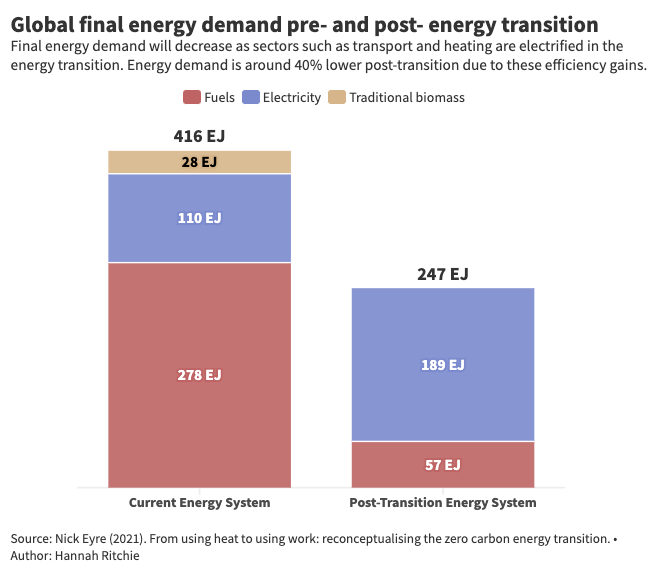The primary energy fallacy gets perpetuated because it suits those who are critical of the energy transition

This is obvious when you think about it, but it would appear that I hadn’t.
Primary energy refers to the total energy content of natural resources before any conversion processes, such as coal, oil, or renewable electricity. The fallacy occurs when people equate high primary energy inputs with energy services. Measuring energy systems purely on primary energy inflates the perceived contribution of fossil fuels while underestimating renewables’ efficiency and untapped efficiency potentials through electrification.
Why do we waste more than 2/3 of the energy inputs you may ask? One reason is to do with the technologies we use: In conventional fossil fuel systems, significant amounts of primary energy are lost as waste heat during combustion. For example, a coal fired power station only converts 40% or so of the coal burned into electricity. By contrast, renewable systems like wind and solar produce electricity directly.
[…]
The primary energy fallacy also gets perpetuated because it suits those who are critical of the energy transition. For the uninformed, the argument that we cannot possibly replace the vast amount of fossil fuel we currently use with clean energy seems compelling at first glance. The good news is that we don’t have to.
Source: Jan Rosenow
Image: Sustainability by Numbers